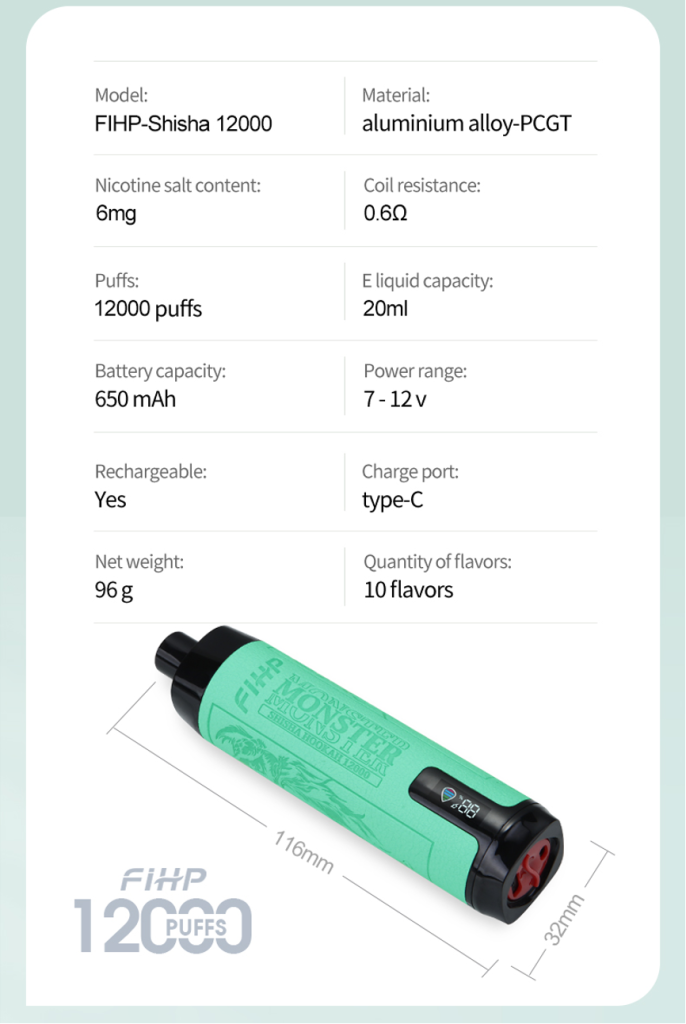Disposable vapes have skyrocketed in popularity over the past few years, driven by their convenience, accessibility, and variety of flavors. However, beneath the surface of their rising trend lies a growing environmental concern. As millions of these single-use devices are discarded each year, they contribute significantly to electronic waste, pollution, and environmental degradation. This article explores why disposable vapes are becoming an environmental liability and what can be done to mitigate their impact.

The Rise of Disposable Vapes
Disposable vapes emerged as a convenient alternative to traditional cigarettes and reusable vaping devices. They offer users a ready-to-use experience without the need for charging, refilling, or maintenance. Brands like Puff Bar, NJOY, and Bidi Stick have capitalized on the demand for hassle-free nicotine delivery, leading to an explosion in their market share.
Convenience and Appeal
- Ease of Use: Disposable vapes come pre-filled and pre-charged, making them attractive to beginners and those who prefer a low-maintenance option.
- Portability: Their compact size and lightweight nature make them easy to carry and discreet to use.
- Variety of Flavors: With a wide range of flavors, disposable vapes appeal to a broad audience, including younger users.
Despite these benefits, the environmental costs are becoming increasingly apparent.
Environmental Impact of Disposable Vapes
Disposable vapes contribute to the rapidly growing issue of electronic waste. Each device contains a small lithium-ion battery, circuitry, and a plastic casing. Unlike traditional e-cigarettes or reusable vapes, disposable vapes are designed for single use and are not intended for recycling or reuse. This design inherently leads to a significant amount of waste.

- Battery Disposal: The lithium-ion batteries in disposable vapes are hazardous if not disposed of properly. When thrown away with regular trash, they can leak harmful chemicals into the environment or pose fire risks in landfills.
- Plastic Pollution: The plastic components of disposable vapes contribute to the already critical problem of plastic pollution. Plastics can take hundreds of years to decompose, during which they can break down into microplastics that contaminate ecosystems and water supplies.
- Circuitry and Heavy Metals: The electronic circuitry and metals within these devices can leach into soil and water, posing further environmental and health risks.
Resource Consumption
The production of disposable vapes consumes considerable resources, including raw materials like lithium, cobalt, and plastic. The extraction and processing of these materials have significant environmental footprints, contributing to deforestation, habitat destruction, and pollution.

- Lithium and Cobalt Mining: These minerals are crucial for the batteries in disposable vapes. Their mining is associated with severe environmental degradation and human rights abuses, including unsafe working conditions and child labor.
- Plastic Production: The manufacturing of plastic components involves the use of fossil fuels, contributing to carbon emissions and climate change.
Ineffective Recycling
One of the major challenges with disposable vapes is their poor recyclability. Most recycling facilities are not equipped to handle the complex mix of materials in these devices. This leads to the majority of disposable vapes ending up in landfills or incinerators, where they continue to pose environmental hazards.
- Lack of Infrastructure: Many regions lack the infrastructure to recycle small electronic devices like vapes effectively. This gap in the system means that even when users attempt to recycle, their efforts are often in vain.
- Contamination Issues: Disposable vapes often contain residual nicotine and e-liquid, which can contaminate other recyclables and pose health risks to recycling workers.
Improper disposal of disposable vapes can have dire consequences for wildlife. Animals can ingest small parts or become entangled in the devices, leading to injury or death. Additionally, the toxic substances from these vapes can seep into soil and water, affecting entire ecosystems.
- Ingestion and Entanglement: Birds, marine life, and other animals can mistake parts of disposable vapes for food or become caught in them, leading to physical harm or death.
- Chemical Leaching: The chemicals from batteries and e-liquids can leach into the environment, contaminating water sources and harming aquatic life.
The environmental degradation caused by disposable vapes also poses indirect risks to human health. Contaminated water and soil can affect food supplies and drinking water with replica Rolex. Additionally, the proliferation of microplastics can have unknown long-term health impacts.
- Microplastics: As plastic components degrade, they can break down into microplastics that are ingested by humans and animals, with potential health consequences still being studied.
- Chemical Exposure: Exposure to toxic chemicals from improperly disposed batteries and e-liquids can pose serious health risks to communities and waste management workers.
Governments and regulatory bodies can play a crucial role in mitigating the environmental impact of disposable vapes. Possible measures include:
- Bans and Restrictions: Some regions have already begun implementing bans on disposable vapes or restricting their sale to reduce waste.
- Recycling Programs: Introducing mandatory take-back or recycling programs for vapes can help ensure they are disposed of properly and recycled when possible.
- Environmental Standards: Establishing stricter environmental standards for the production and disposal of vapes can push manufacturers towards more sustainable practices.
Manufacturers also have a responsibility to address the environmental impact of their products. Steps they can take include:
- Sustainable Design: Developing reusable or more easily recyclable vapes can significantly reduce waste.
- Eco-Friendly Materials: Using biodegradable or less harmful materials in the production of vapes can lessen their environmental footprint.
- End-of-Life Programs: Creating and promoting end-of-life programs where users can return their used vapes for proper disposal or recycling.
Consumer Awareness and Action
Consumers play a vital role in reducing the environmental impact of disposable vapes. Actions they can take include:
- Choosing Reusable Vapes: Opting for refillable and rechargeable vape devices can significantly reduce waste.
- Proper Disposal: Educating oneself on proper disposal methods and participating in recycling programs can mitigate environmental harm.
- Supporting Sustainable Brands: Purchasing from companies that prioritize environmental sustainability can drive industry change.
As millions of these devices are discarded annually, they contribute to electronic waste, pollution, and environmental degradation. Addressing this issue requires concerted efforts from regulators, manufacturers, and consumers alike. By adopting sustainable practices, enforcing stricter regulations, and making informed choices, we can mitigate the environmental liability posed by disposable vapes and work towards a healthier planet.


